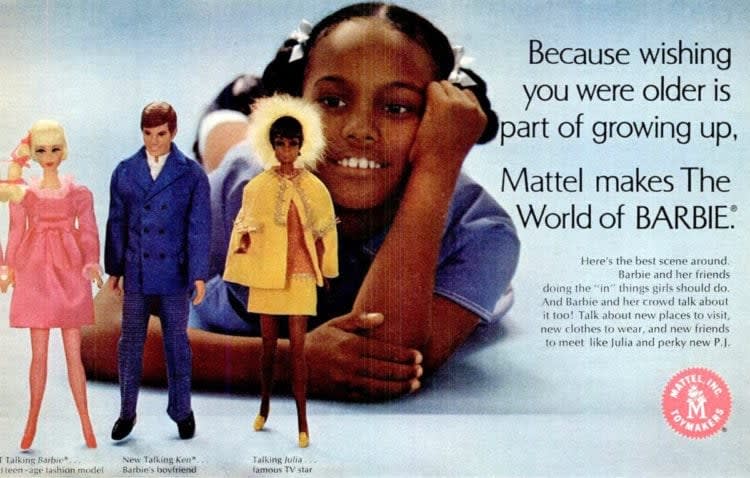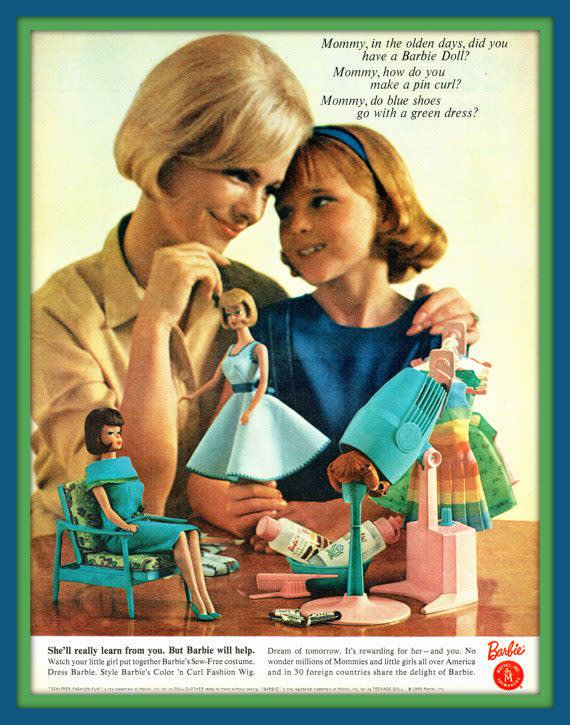
Mattel
Barbie, Vintage Advertisement, 1965
Through hundreds of careers and countless redevelopments, Barbie has remained a fixture of our culture since her invention in 1959. When Harold Matson, co-founder of California-based toy manufacturer Mattel, sold his share in the company to partner Elliot Handler, Handler’s wife Ruth stepped into the role that Matson left behind. Inspired by her daughter playing with paper dolls, Ruth Handler created Barbie as a non-traditional fashion doll aimed towards helping young girls look toward the future. Officially named Barbara Millicent Roberts, Barbie’s look was modeled after Bild Lilli, a doll inspired by a character from a German comic strip. Mattel bought the rights to the Lilli doll and, in 1959, debuted Barbie at the American Toy Fair in New York. Known for her ever-changing style and career, Barbie was imagined as a reflection of the times, and thus her model constantly shifts, originally mimicking the look of 1950s movie stars like Elizabeth Taylor and Marilyn Monroe.
The huge success of the Barbie doll was due in large part to the then-niche market of young girls that Handler recognized. To inspire this market, Barbie has had over 200 careers including doctor, scientist, policewoman, ballerina, and university student. During the 1960s, Mattel introduced several new characters to the Barbie universe including Barbie’s boyfriend Ken, her little sister Skipper, and her best friend Midge. The first African-American Barbie was introduced in 1980, designed by Kitty Black Perkins who would go on to be Barbie’s chief designer of fashions and doll concepts. The same year, over 40 international Barbie dolls were introduced. Barbie would continue to make waves for decades to come, introducing Barbie Fashionistas in 2016 with a diverse range of body types, skin tones, and hairs to better suit the doll’s diverse range of customers, and releasing the Inspiring Women collection two years later, featuring dolls of history-making women like Amelia Earhart, Frida Kahlo, and Katherine Johnson.
Mattel
Barbie, A first edition barbie doll, 1959
Mattel
Barbie, A first edition barbie doll, 1959
Mattel
Barbie by Kitty Black Perkins, The First African American Barbie Doll, 1980
Mattel
Barbie by Kitty Black Perkins, The First African American Barbie Doll, 1980
Mattel
Uptown Chic, Barbie Doll, 1980s
Mattel
Amelia Earhart, Barbie Doll
Mattel
Amelia Earhart, Barbie Doll
Mattel
Frida Kahlo, Barbie Doll
Mattel
Frida Kahlo, Barbie Doll
Mattel
Katherine Johnson, Barbie Doll
Mattel
Katherine Johnson, Barbie Doll
Barbie has inspired a huge range of art forms and artists. Pop Artists in particular are drawn to Barbie’s mix of commerciality and high fashion. Much like the paper dolls that Ruth Handler’s daughter would play with, Barbie can be endlessly customized to represent the personal style, mood, and dreams of the customer, and many artists recognize this blank canvas as the perfect jumping off point. In 1986, Andy Warhol painted a portrait of Barbie, which was in fact intended as a portrait of Warhol’s close friend BillyBoy. BillyBoy, a jewelry designer who also designed two dolls for Mattel, was an avid Barbie collector and insisted that he would only allow Warhol to paint his “portrait” if it was a portrait of Barbie. Peter Max painted Barbie in 1994 in his signature Cosmic style. Max painted the doll as a living character, using a tiara and pearls to portray the image of a young Hollywood starlet. In both cases of portraiture, the artist uses Barbie as a stand-in representing a larger idea.
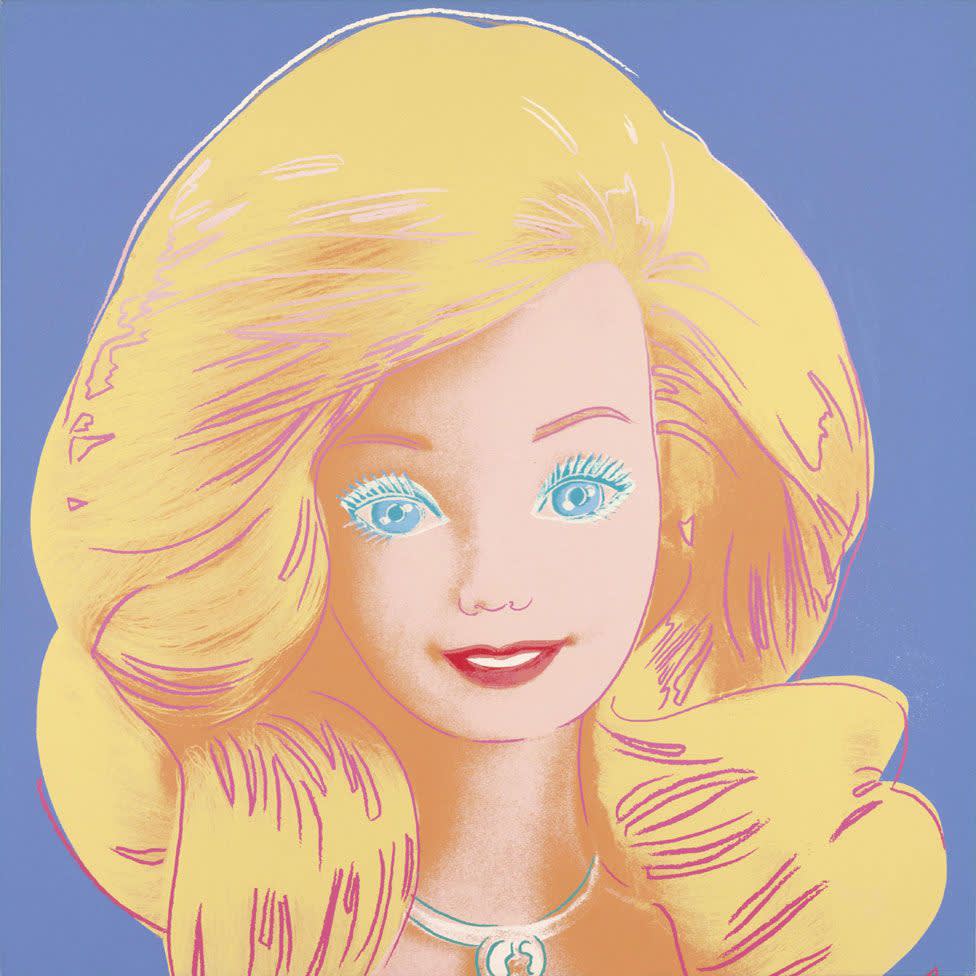
Andy Warhol
Barbie, 1986
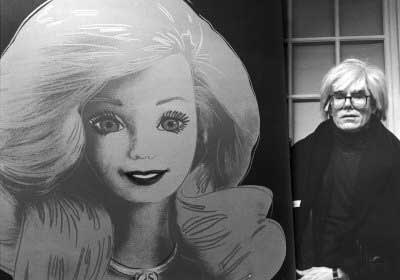
Andy Warhol
With his painting, Barbie, 1986
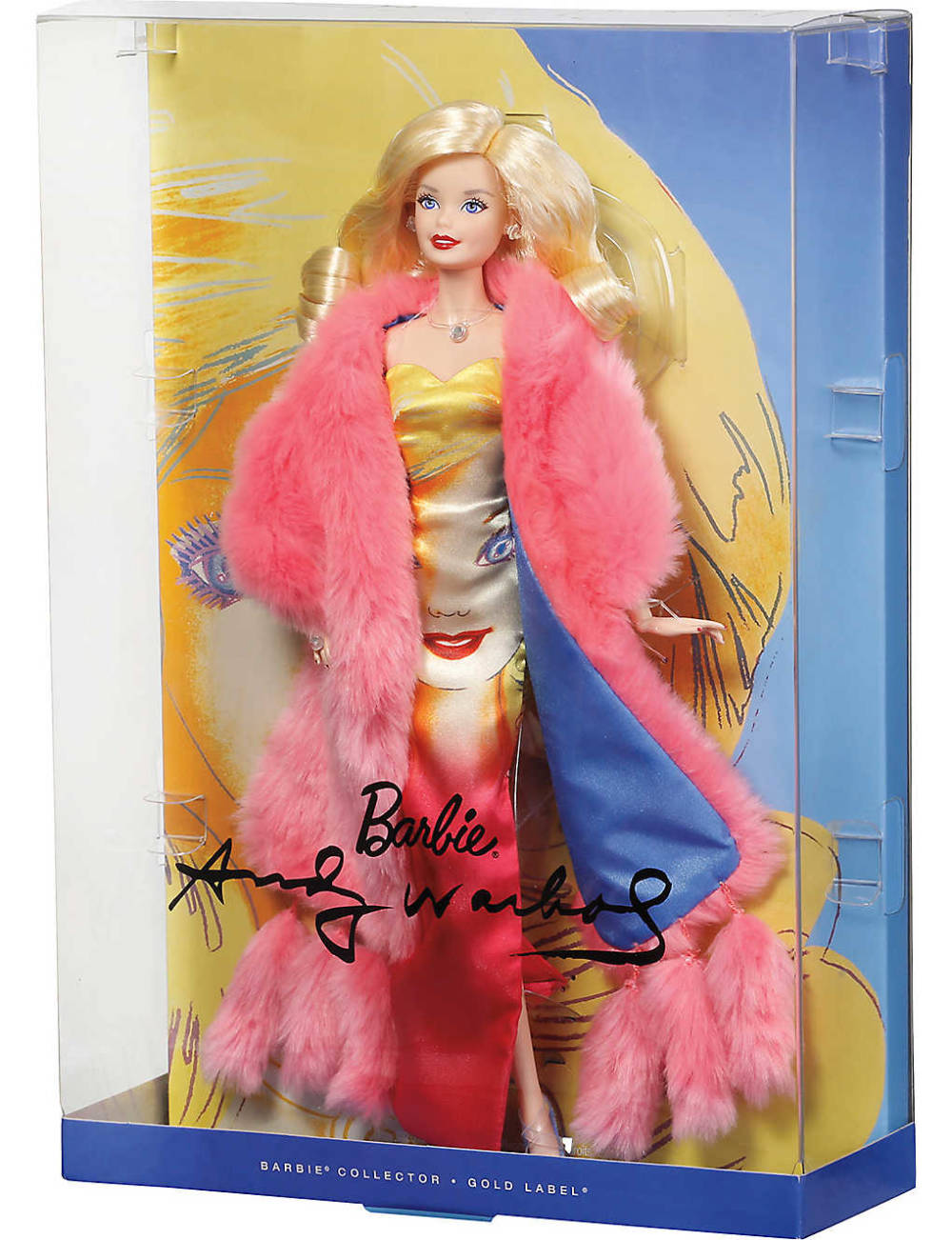
Mattel
Andy Warhol Edition, Barbie Doll
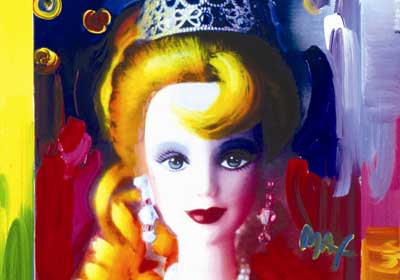
Peter Max
Futuristic Barbie, 1994
Artists have also photographed Barbie dolls in unique and innovative ways. Catherine Théry’s “Pas celles que vous croyez” (Not the Ones You Think) series replaces characters in famous artwork with Barbies, using them as a way to explore and question ideals of gender dynamics, femininity, and religion in classical art. In 2009, David Parise, inspired by a Barbie fashion book, began photographing vintage 1960s Barbies against the backdrop of Miami’s beaches. The images evoke a sense of nostalgia, which is only heightened by the role of the dolls. Photographer David Levinthal’s Barbie exhibit consisted of a series of polaroids that used Barbie as a representation of popular culture. The series mimics early fashion photography, using post-war fashion, stiff poses, and monochromatic colored backdrops.
Catherine Théry
Pas celles que vous croyez
Catherine Théry
Pas celles que vous croyez
Catherine Théry
Pas celles que vous croyez
Catherine Théry
Pas celles que vous croyez
Catherine Théry
Pas celles que vous croyez
David Parise
Barbie, 2009
David Parise
Barbie, 2009
David Parise
Barbie, 2009
David Parise
Barbie, 2009
David Parise
Barbie, 2009
David Levinthal
Barbie, 1997-98
David Levinthal
Barbie, 1997-98
David Levinthal
Barbie, 1997-98
David Levinthal
Barbie, 1997-98
David Levinthal
Barbie, 1997-98
David Levinthal
Barbie, 1997-98
David Levinthal
Barbie, 1997-98
Other art has been made in direct collaboration with the Barbie brand. In 1994, Mattel commissioned designer Craig Yoe to design an art book centered on Barbie. The book features the work of over 100 artists, photographers, and fashion designers. In honor of 2020’s World Art Day, Mattel has released a Jean-Michel Basquiat Barbie doll, complete with the artist’s signature crown and an ensemble paying homage to Basquiat’s career.
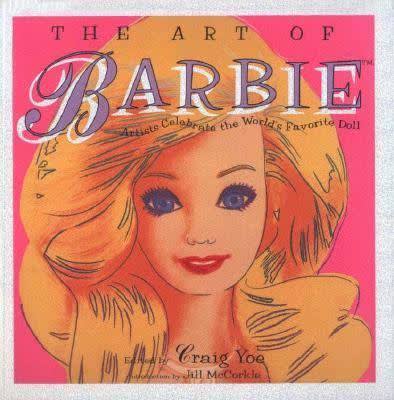
Craig Yoe
The Art of Barbie, 1994
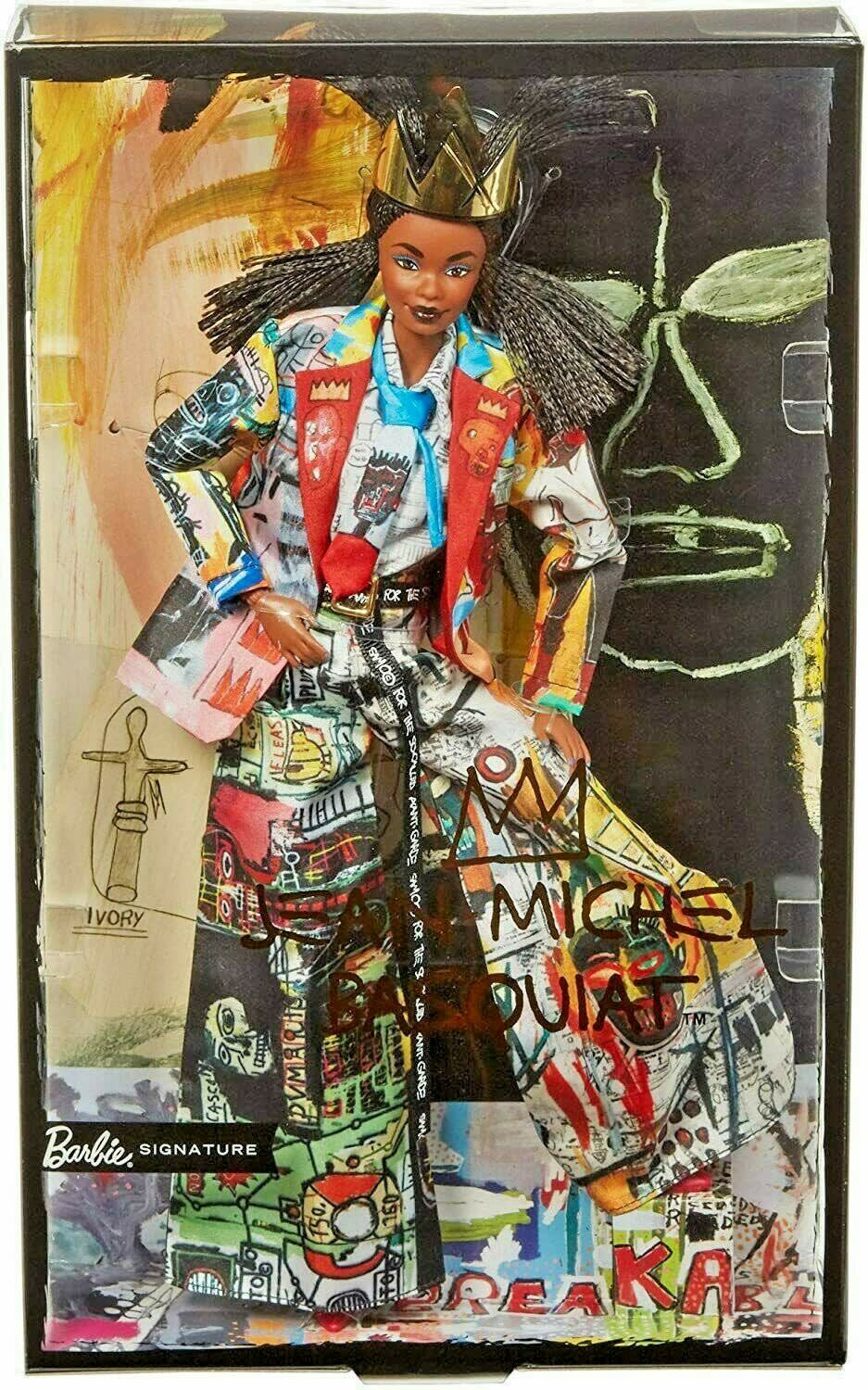
Mattel
Basquiat Edition, Barbie Doll
Even the world of architecture has collided with Barbie, which is no surprise considering the release of Architect Barbie in 2011. As a way to engage with the architectural community, Mattel collaborated with the American Institute of Architects to host a competition to design a Barbie Dream House. The winning design features a green roof, solar panels, and an irrigation system, inspiring Barbie’s community of young girls to be innovative and conscious of our changing world. For Barbie’s 50th birthday, designer Jonathan Adler was commissioned by Mattel to decorate the interior of the real-life Barbie Dream House, located in Malibu. Adler decorated it as though Barbie really lives there, complete with pink carpeting, a closet full of peep-toe heels, and a pink Volkswagen Beetle. The house even features a museum which displays 25 vintage dolls, and Andy Warhol’s Barbie portrait hangs in the living room.
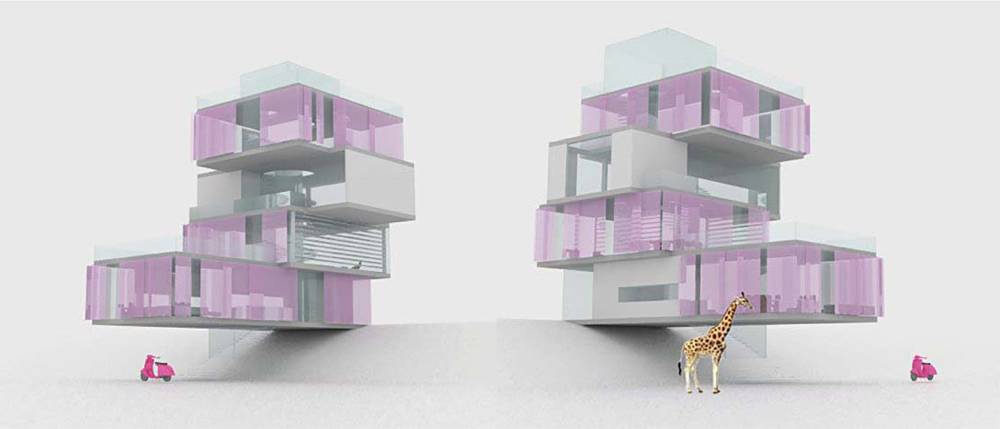
AIA Architect
Barbie Dream House Design, 2011
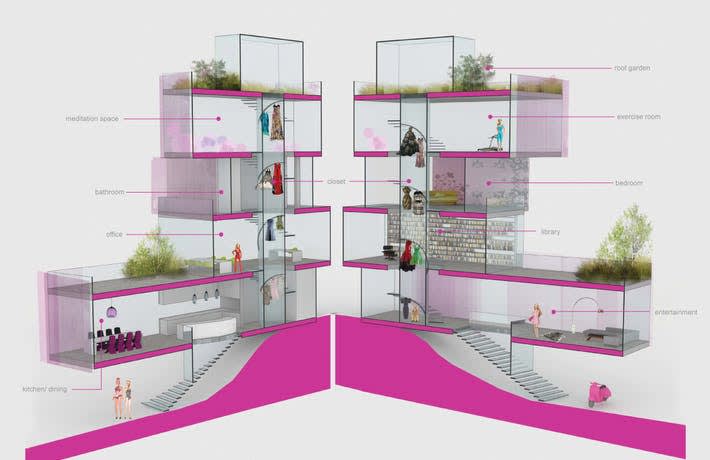
AIA Architect
Barbie Dream House Design, 2011
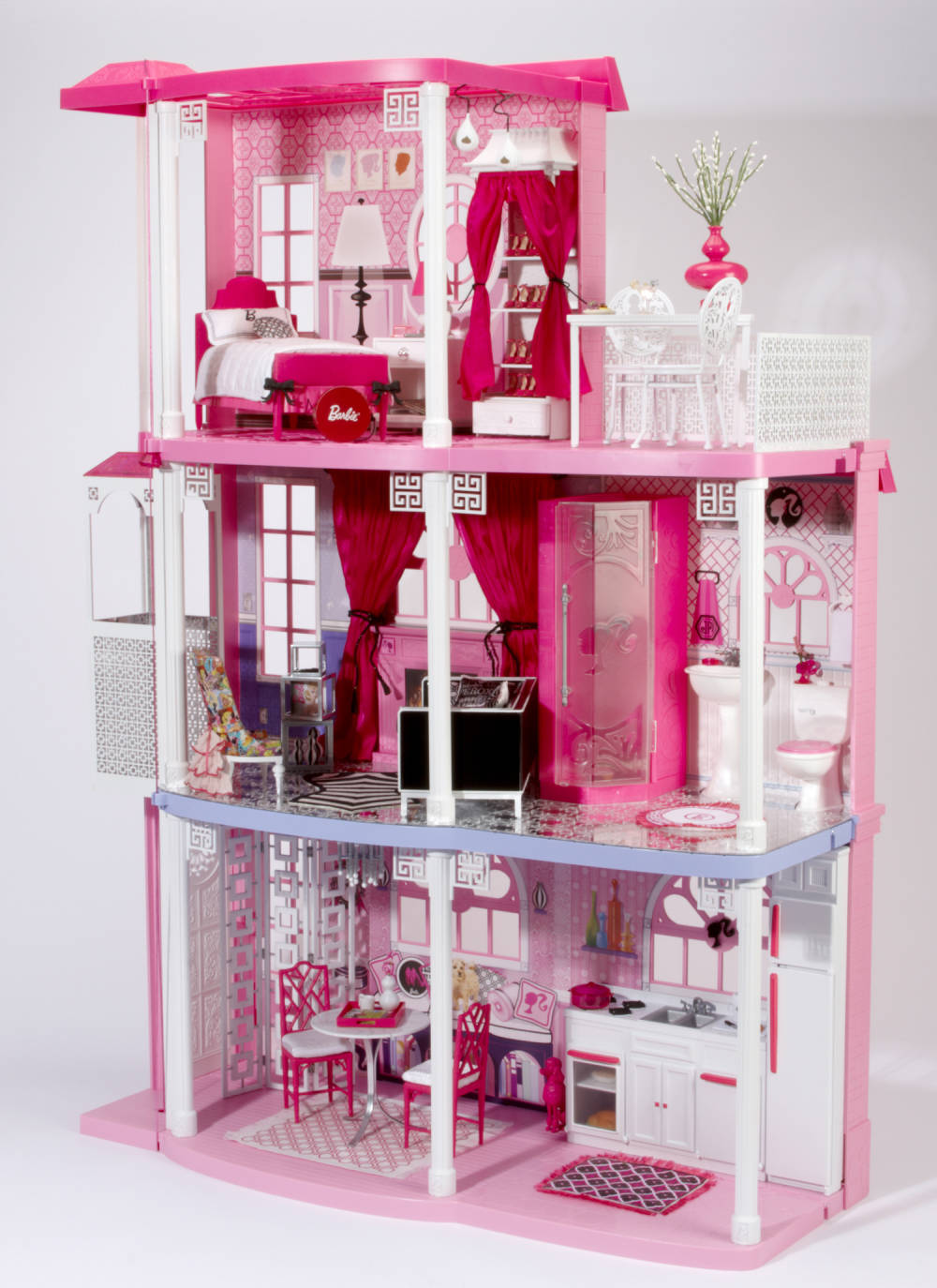
Jonathan Adler
Barbie Dream House
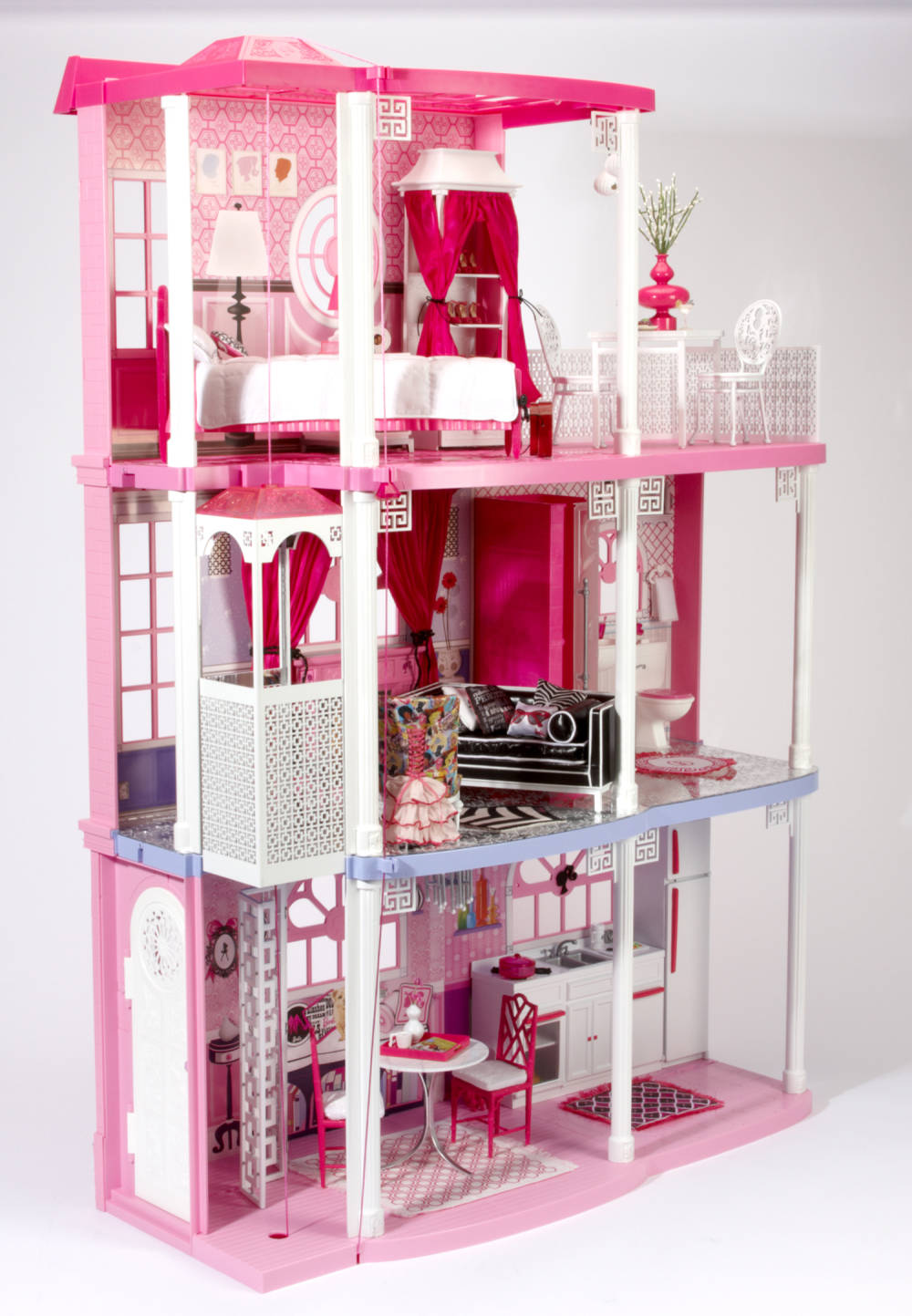
Jonathan Adler
Barbie Dream House

Jonathan Adler
Barbie Dream House
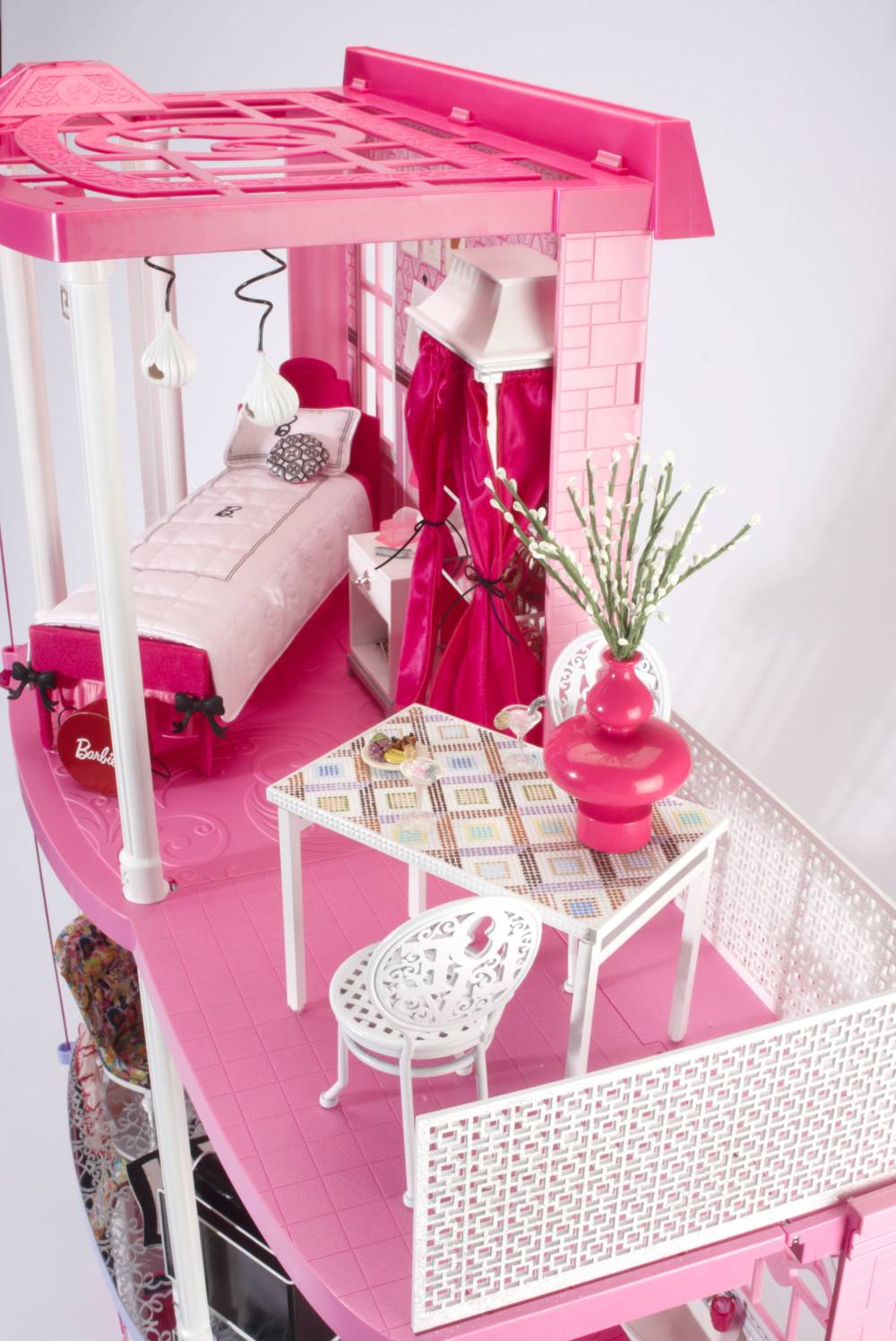
Jonathan Adler
Barbie Dream House
Originally a fashion doll, Barbie has both inspired and taken inspiration from countless fashion designers. In 2009, Barbie had her own runway show at New York Fashion Week which featured creations by over 50 famous designers. Streetwear brands like Kith and BAPE have released Barbie-inspired collections complete with special dolls, Barbie clothes, and limited-edition apparel. In 2010, Christian Louboutin released a collection of nine collectible Barbie shoes with the designer’s signature red soles, complete with a matching bag and box. Perhaps the most recognizable of all Barbie-inspired collections, Moschino’s 2015 Spring/Summer runway combined the brand’s playful aesthetic and fascination with commercial culture with Barbie’s signature fashions. The resulting collection was full of bubblegum pink hues, mini skirts, and blonde wigs. It even made an appearance at the 2019 Met Gala.
Kith
Barbie Collaboration, 2019
Kith
Barbie Collaboration, 2019
Kith
Barbie Collaboration, 2019
BAPE
Barbie Collaboration, 2019
BAPE
Barbie Collaboration, 2019
BAPE
Barbie Collaboration, 2019
Christian Louboutin
Barbie Shoe Collection Collaboration
Christian Louboutin
Barbie Shoe Collection Collaboration
Moschino
Spring/Summer 2015
Moschino
Spring/Summer 2015
Moschino
Spring/Summer 2015
Moschino
Spring/Summer 2015
Moschino
Spring/Summer 2015
In addition to fashion collections, many designers have been invited to create their own version of the Barbie doll. When designer Bob Mackie was commissioned to design the first Bob Mackie Barbie in 1990, the resulting product became one of the most sought-after dolls for collectors. In the years following, designer brands like Christian Dior, Vera Wang, Givenchy, and Zac Posen have designed Barbie dolls in their own signature looks, including a throwback to Dior’s 1947 New Look and a 1956 Givenchy gown. These dolls not only further connect Barbie with the fashion industry, they help to preserve important historical styles and educate consumers on fashion history. In more recent years, Barbie dolls have been made by brands like Oscar de la Renta, Yves Saint Laurent, and Moschino.
Bob Mackie
Gold Limited Edition Barbie, 1990
Christian Dior
Barbie Doll Collaboration
Christian Dior
Barbie Doll Collaboration
Vera Wang
Barbie Doll Collaboration
Vera Wang
Barbie Doll Collaboration, Advertisement, 1998
Givenchy
Barbie Doll Collaboration
Oscar de la Renta
Barbie Doll Collaboration
Yves Saint Laurent
Barbie Doll Collaboration
Yves Saint Laurent
Barbie Doll Collaboration
Yves Saint Laurent
Barbie Doll Collaboration
Moschino
Barbie Doll Collaboration
Moschino
Barbie Doll Collaboration
Due to her fashionista status, in 2016 Barbie received an invitation to the Museée des Arts Deécoratifs in Paris. Along with over 700 dolls, the exhibit displays work by contemporary artists as well as photos, videos, and documents that contextualize Barbie’s life. Using Barbie as a direct reflection of changing American culture, the exhibit is an insight into American life throughout the decades as well as into Barbie’s origin and evolution.
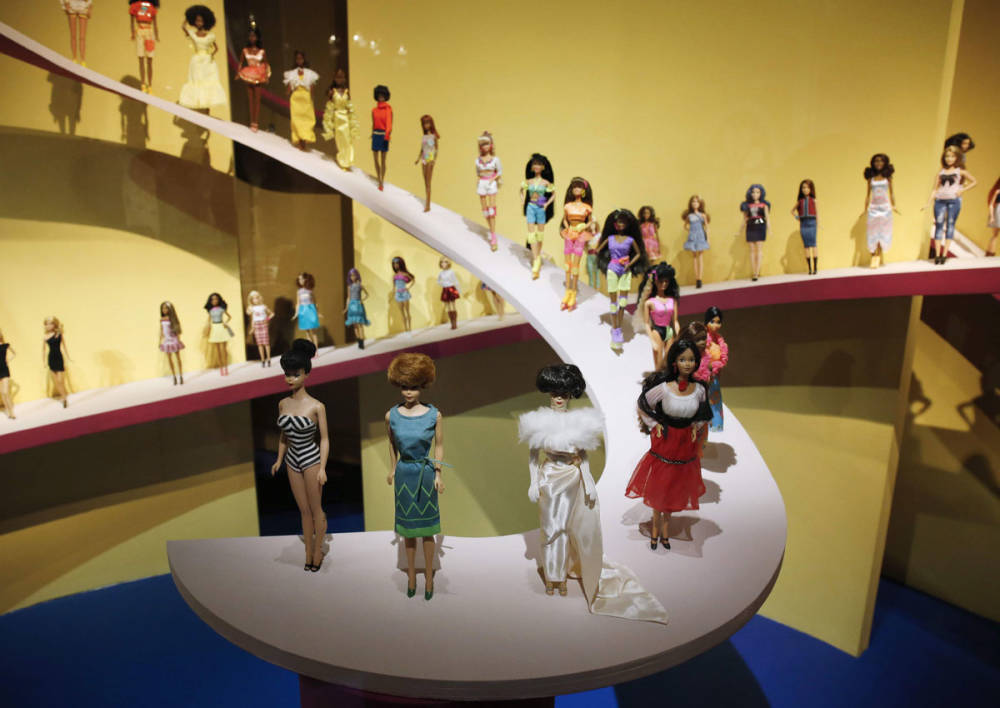
Barbie Exhibition
Musée des Arts Deécoratifs, Paris, 2016
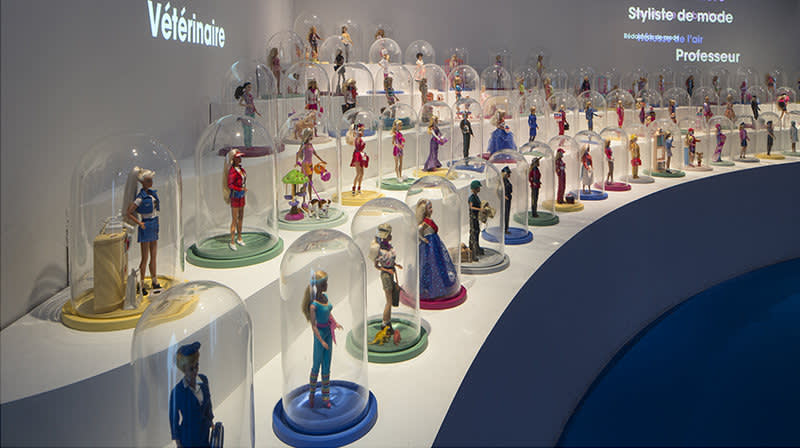
Barbie Exhibition
Musée des Arts Deécoratifs, Paris, 2016

Barbie Exhibition
Musée des Arts Deécoratifs, Paris, 2016
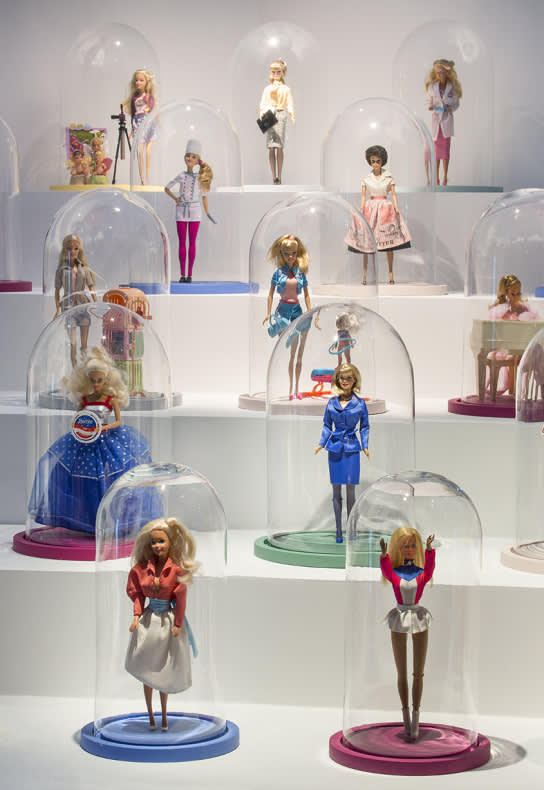
Barbie Exhibition
Musée des Arts Deécoratifs, Paris, 2016
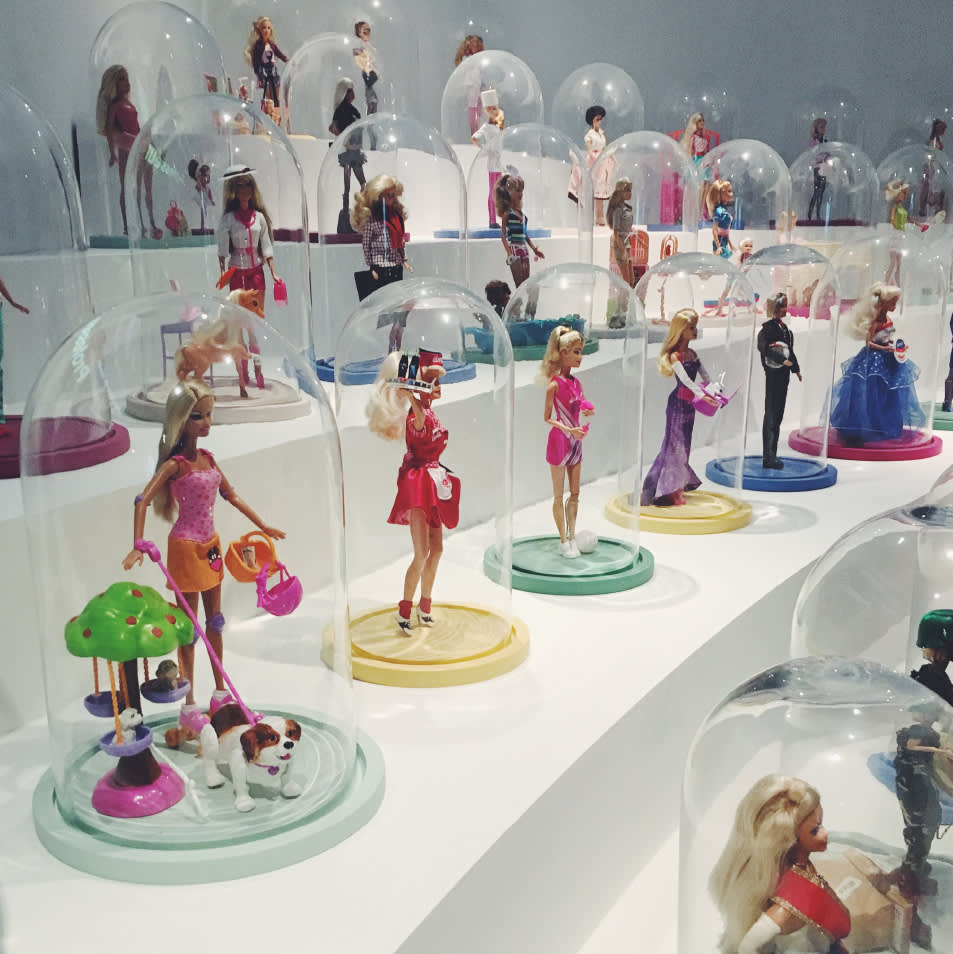
Barbie Exhibition
Musée des Arts Deécoratifs, Paris, 2016
It is important to note that, while Barbie is featured in countless artworks, many of these works seek to subvert the unhealthy feminine ideals that Barbie embodies. Barbie’s unrealistic body proportions have become a symbol of the way that societal expectations harm women and, in particular, instill these unrealistic expectations in young girls. In recent years, Mattel has taken some accountability for the harm these dolls can do. The introduction of the Fashionista Barbie in 2016 marks Mattel’s first major step in dismantling these standards, but Barbie still has a long way to go.
